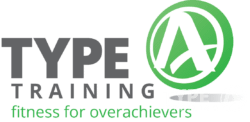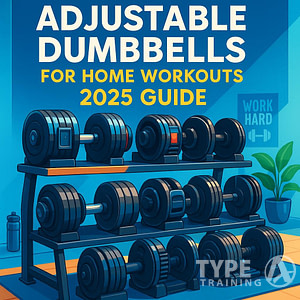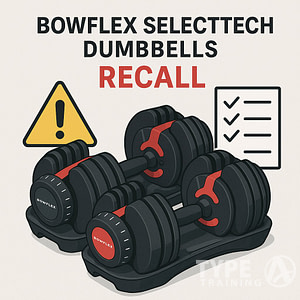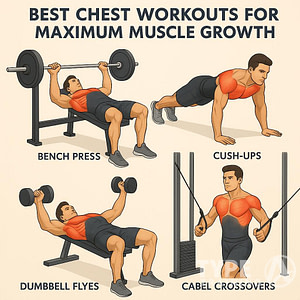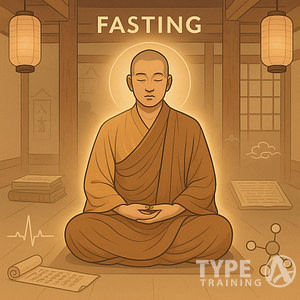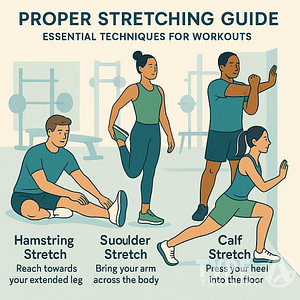Pickleball enthusiasts, it’s time to level up your game with strength training. As the sport continues to grow in popularity, players are seeking ways to improve their performance and prevent injuries.
Incorporating strength training exercises into your routine can enhance your power, agility, and endurance on the court.
These 9 pickleball-specific exercises target key muscle groups used in the sport.
Popular posts:
By focusing on upper body, lower body, and core strength, you’ll be better equipped to handle the demands of quick movements and powerful shots.
Whether you’re a beginner or an experienced player, these exercises can be tailored to your fitness level.
Regular strength training will not only improve your pickleball skills but also contribute to your overall health and well-being.
Key Takeaways
- Strength training exercises can significantly improve your pickleball performance
- A well-rounded routine targets upper body, lower body, and core muscles
- Regular strength training helps prevent common pickleball-related injuries
Benefits of Strength Training for Pickleball
Strength training offers numerous advantages for pickleball players, enhancing your physical capabilities and overall game performance.
It can help you prevent injuries, boost your athletic prowess, and improve muscle balance and coordination on the court.
Preventing Injuries
Strength training fortifies your muscles, tendons, and ligaments, making you more resilient to common pickleball injuries.
By strengthening the muscles around your joints, you reduce the risk of strains and sprains.
Focus on exercises that target your shoulders, elbows, and knees – areas prone to overuse in pickleball.
Rotator cuff exercises can protect your shoulders from repetitive overhead motions.
Strengthening your core and lower body also improves stability, reducing the likelihood of falls or awkward landings.
Regular strength work enhances your body’s ability to absorb shock and maintain proper form during intense rallies.
This increased durability allows you to play longer and more frequently without risking injury.
Enhancing Athletic Performance
Strength training directly translates to improved pickleball performance.
It increases your power, allowing for more forceful shots and quicker movements on the court.
Stronger legs enable you to generate more explosive force when serving or hitting overhead smashes.
A robust core enhances your ability to rotate and transfer power from your lower body to your upper body, resulting in more powerful groundstrokes.
Improved strength also boosts your endurance.
You’ll fatigue less quickly during long matches and maintain consistent performance throughout tournaments.
Enhanced muscle efficiency means you can play at a higher intensity for longer periods.
Improving Muscle Balance and Coordination
Pickleball often leads to muscle imbalances due to repetitive motions.
Strength training helps correct these imbalances by targeting underused muscle groups.
This balanced approach improves your overall coordination and reduces the risk of overuse injuries.
Exercises that focus on unilateral movements, like single-leg squats or one-arm rows, can address strength discrepancies between your dominant and non-dominant sides.
This balanced strength contributes to better on-court stability and more controlled movements.
Strength training also enhances your proprioception – your body’s awareness of its position in space.
This improved body awareness translates to better hand-eye coordination and more precise shot placement during games.
Pickleball-Specific Conditioning
Effective conditioning for pickleball focuses on developing core strength, improving agility and speed, and building power and explosiveness.
These elements are crucial for enhancing your on-court performance and reducing injury risk.
Developing Core Strength
Core strength is fundamental for pickleball players. A strong core improves your balance, stability, and power generation during shots.
Incorporate exercises like planks, Russian twists, and medicine ball rotations into your routine.
Aim for 3 sets of 30 seconds for planks and 15-20 repetitions for other exercises.
Add bicycle crunches and standing cable rotations to target your obliques. These muscles are essential for generating rotational power in your shots.
Remember to engage your core during all pickleball movements, not just during specific exercises. This practice will translate to better on-court performance.
Improving Agility and Speed
Agility and speed are vital for covering the court quickly and reacting to opponent shots.
Set up an agility ladder and practice footwork drills.
Focus on quick, precise steps to improve your coordination and speed.
Incorporate shuttle runs and cone drills into your training. These exercises mimic the short, quick movements common in pickleball.
Try lateral shuffles and change-of-direction drills to enhance your side-to-side movement.
Start with 3 sets of 30 seconds for each exercise.
Don’t forget to include dynamic stretches like high knees and butt kicks in your warm-up routine.
These prepare your muscles for the quick movements required during play.
Building Power and Explosiveness
Power and explosiveness allow you to generate force quickly, crucial for powerful serves and decisive shots.
Add plyometric exercises like box jumps and jump squats to your routine.
Start with 3 sets of 8-10 repetitions, focusing on proper form and landing technique.
Incorporate medicine ball slams and throws to develop upper body power. These exercises mimic the explosive movements used in overhead smashes.
Try resistance band exercises like rapid pulls and rotations.
These build power while simulating pickleball-specific movements.
Remember to gradually increase the intensity and complexity of your exercises as your fitness improves.
Always prioritize proper form to prevent injuries and maximize the benefits of your training.
Upper Body Workouts for Pickleball Players
Developing upper body strength is crucial for improving your pickleball performance. These exercises target key muscle groups used in serves, volleys, and overhead shots.
Targeting Shoulders and Arms
Push-ups are an excellent exercise for pickleball players. They strengthen your chest, shoulders, and triceps, all essential for powerful shots.
Aim for 3 sets of 10-15 repetitions.
Bicep curls help build arm strength for better control during dinks and volleys. Use dumbbells or resistance bands for 3 sets of 12-15 reps per arm.
Tricep dips improve your arm extension, enhancing your reach for overhead shots.
Perform 3 sets of 10-12 dips using a bench or chair.
Shoulder press exercises target your deltoids, crucial for serving power.
Use light dumbbells for 3 sets of 12-15 reps.
Strengthening the Back and Chest
Pull-ups or assisted pull-ups work your back muscles, improving your posture and shot power.
Start with 3 sets of 5-8 reps, gradually increasing as you build strength.
Chest flyes target your pectoral muscles, enhancing your ability to generate power in forehand shots.
Use dumbbells or a cable machine for 3 sets of 12-15 reps.
Rows strengthen your upper back, improving your overall stability on the court.
Try bent-over rows with dumbbells for 3 sets of 12-15 reps.
Incorporate these exercises into your routine 2-3 times per week, allowing for rest days between sessions to promote muscle recovery and growth.
Lower Body Training
Strong legs and a stable base are crucial for pickleball performance. Focused lower body training improves your agility, power, and endurance on the court.
Enhancing Leg Strength
Squats are a fundamental exercise for pickleball players.
Start with bodyweight squats, then progress to goblet squats using a dumbbell or kettlebell. Aim for 3 sets of 10-12 repetitions.
Lunges target your quads, hamstrings, and glutes.
Perform forward and reverse lunges, 10-12 reps per leg. Add dumbbells for extra resistance as you get stronger.
Deadlifts build overall lower body strength.
Use a barbell or dumbbells, keeping your back straight and core engaged. Start with 3 sets of 8-10 reps.
Box jumps improve explosive power. Choose a sturdy box at an appropriate height.
Jump up and step down carefully. Do 3 sets of 6-8 jumps.
Boosting Stability with Single-Leg Exercises
Single-leg deadlifts enhance balance and strengthen your hamstrings.
Hold a dumbbell in one hand, hinge forward on one leg. Perform 3 sets of 8-10 reps per leg.
Split squats target each leg individually. Step one foot forward, lower your back knee towards the ground.
Do 3 sets of 10-12 reps for each leg.
Lateral lunges improve side-to-side movement.
Step out to one side, keeping your other leg straight. Push back to the starting position. Aim for 3 sets of 10 reps per side.
Glute bridges strengthen your posterior chain.
Lie on your back, feet flat on the floor. Lift your hips, squeezing your glutes. Try 3 sets of 12-15 reps.
Core and Flexibility Drills
Core stability and flexibility are crucial for pickleball players. These exercises enhance your on-court performance and reduce injury risk.
Core-Stabilizing Workouts
Planks are excellent for building core strength.
Start with a 30-second hold and gradually increase duration.
Russian twists target your obliques. Sit on the floor, lean back slightly, and rotate your torso from side to side.
The Pallof press improves rotational stability.
Stand sideways to a cable machine, press the handle forward, and resist rotation. Perform 3 sets of 10-12 reps on each side.
Bird dogs enhance balance and core control.
Start on all fours, extend one arm forward and the opposite leg back. Hold for 5-10 seconds, then switch sides. Aim for 10 reps per side.
Incorporating Flexibility and Mobility Exercises
Dynamic stretching improves your range of motion. Try leg swings, arm circles, and torso twists before playing. Hold each movement for 10-15 seconds.
Yoga poses like downward dog and cat-cow stretch your spine and shoulders. Practice these for 5-10 minutes daily to increase flexibility.
Foam rolling helps release muscle tension. Roll your quads, hamstrings, and back for 30-60 seconds each. This improves mobility and reduces post-game soreness.
Ankle mobility drills are essential. Stand facing a wall, push your knee forward over your toes while keeping your heel down. Hold for 10 seconds on each foot.
Developing a Structured Strength Training Program
Creating a structured strength training program for pickleball is essential to improve your performance on the court. Start by assessing your current fitness level and setting clear goals for your training.
Incorporate a mix of strength and conditioning exercises targeting key muscle groups used in pickleball. Focus on exercises that enhance rotational strength, power, and endurance.
Begin with 2-3 strength training sessions per week, allowing for adequate rest between workouts.
Each session should last 30-45 minutes and include a proper warm-up and cool-down.
Choose 6-8 exercises per session, performing 2-3 sets of 8-12 repetitions for each. Gradually increase the weight or resistance as you become stronger.
Here’s a sample weekly schedule:
- Monday: Upper body strength + core
- Wednesday: Lower body strength + balance
- Friday: Full body circuit + plyometrics
Remember to include exercises that mimic pickleball movements, such as lunges, rotational medicine ball throws, and lateral shuffles.
Track your progress regularly and adjust your program as needed. Consistency is key to seeing improvements in your strength and athletic ability on the pickleball court.
Always listen to your body and consult with a fitness professional if you’re unsure about proper form or exercise selection. Stay hydrated and maintain a balanced diet to support your training efforts.
Incorporating Sports-Specific Drills
Sports-specific drills enhance your pickleball performance by targeting key movement patterns. These exercises improve footwork, agility, and power on the court.
Agility Ladder Drills for Enhanced Footwork
Agility ladder drills boost your footwork and coordination. Place a ladder on the ground and perform quick steps through the rungs. Try lateral shuffles, in-and-out steps, and high knees.
Aim for 30-second intervals with 15-second rests. Repeat 3-5 times. Focus on speed and precision.
These drills translate directly to pickleball movements. You’ll notice improved reaction time and ability to change directions quickly during matches.
Cone Drills for Multidirectional Movement
Set up cones in various patterns to mimic pickleball court movements. Practice sprinting, backpedaling, and side-stepping between cones.
Try a “star drill”: Place 5 cones in a star shape. Start at one cone, sprint to the center, then to the next cone. Repeat for all points of the star.
Perform each drill for 30 seconds. Rest for 15 seconds between sets. Complete 3-5 rounds.
These exercises enhance your ability to cover the court efficiently and respond to opponents’ shots.
Skater Jumps for Lateral Power
Skater jumps develop explosive lateral movement crucial for pickleball. Start in a slight squat position. Jump sideways, landing on one foot. Immediately jump back to the starting position.
Perform 10-15 jumps per side. Rest for 30 seconds. Repeat 3 times.
Focus on landing softly and maintaining balance. As you improve, increase the distance of your jumps.
This exercise strengthens your legs and improves your ability to reach wide shots during games.
Addressing Common Pickleball Injuries
Pickleball’s popularity has led to an increase in related injuries. Understanding these common issues can help you prevent and address them effectively.
Shoulder pain is frequent among players due to repetitive overhead motions. To reduce risk, focus on proper technique and shoulder-strengthening exercises.
Knee injuries often result from quick lateral movements. Improve your knee stability through targeted exercises and always wear appropriate footwear.
Tennis elbow, despite its name, affects many pickleball enthusiasts. Combat this by strengthening your forearm muscles and using proper grip techniques.
Lower back strain can occur from frequent bending and twisting. Incorporate core-strengthening exercises into your routine to support your spine.
Ankle sprains are common due to sudden direction changes. Enhance your ankle stability with balance exercises and consider wearing supportive braces.
Rotator cuff injuries may develop over time. Implement a regular stretching routine and avoid overexertion to protect these crucial shoulder muscles.
Proper warm-up and cool-down routines are essential for injury prevention. Dedicate time before and after play to prepare and recover.
If you experience persistent pain or discomfort, consult a healthcare professional. Early intervention can prevent minor issues from becoming serious injuries.
Remember, maintaining overall physical fitness contributes significantly to injury prevention in pickleball. Regular strength training and flexibility work are key components of a well-rounded approach to the sport.
Frequently Asked Questions
Strength training exercises can significantly enhance your pickleball performance. These workouts target key muscle groups and improve overall athleticism on the court.
How can I improve my pickleball game with strength training exercises?
Incorporate exercises that boost power, agility, and endurance. Focus on movements that mimic pickleball actions, like lunges and rotational exercises. Aim for 2-3 strength training sessions per week, allowing rest days between workouts.
What are some effective strength training workouts for pickleball players?
Squats, lunges, and deadlifts build lower body strength. Push-ups and shoulder presses enhance upper body power. Planks and Russian twists improve core stability. Resistance band exercises target specific muscle groups used in pickleball.
Which muscles should I focus on strengthening to improve my pickleball play?
Prioritize your legs, core, and shoulders. Strong quadriceps and hamstrings improve court coverage. A solid core enhances balance and rotational power. Shoulder exercises boost overhead shots and serves.
Are there specific strength training exercises recommended for senior pickleball players?
Low-impact exercises are ideal for seniors. Try bodyweight squats, wall push-ups, and seated rows. Use resistance bands for shoulder rotations and leg extensions. Focus on balance exercises to prevent falls and improve stability.
Can I perform pickleball strength training exercises at home and if so, which ones?
You can do many effective exercises at home. Try bodyweight squats, lunges, and push-ups. Use resistance bands for arm and shoulder workouts. Planks and leg raises target your core. A stability ball adds variety to home workouts.
What should a complete pickleball workout plan include to build relevant muscle groups?
Combine strength training with cardiovascular exercises and flexibility work.
Include lower body exercises like squats and lunges.
Add upper body workouts for arms and shoulders.
Incorporate core-strengthening moves.
Finish with stretching to maintain flexibility.
